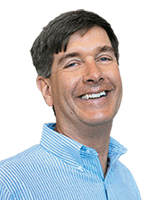How to retain university turfgrass programs, students and faculty
I am worried, and I’m not a worrier. I’m worried about the state of university turfgrass programs. I’m worried about the gradual erosion of some of our university turfgrass programs on two fronts; declining student enrollment and loss of faculty positions in turfgrass science.
I ask university turfgrass scientists about enrollment in their undergraduate turf major. They usually tell me it’s down more than 50 percent from peak enrollment in the early 2000s and is continuing to decline, or in the best cases enrollment has declined more than 50 percent but is now flattening out.
Maybe you’re thinking a decline in enrollment is a good thing, that the job market is flooded with freshly graduated students eager for their first permanent job. But a flood of qualified recent graduates looking for their first position as an assistant superintendent does not seem to be the case.
When I ask about job prospects in the industry for graduating turfgrass science majors, the answer is usually that they are great. Professors say demand for qualified graduates seeking a position as an assistant superintendent exceeds supply. There are many unfilled assistant superintendent positions at good golf courses that would be wonderful starting points for a career. Professors say they could place many more students in good positions if they had more graduating turfgrass science majors.
So where did all the turfgrass majors go?
There are many theories as to why undergraduate enrollment in turfgrass science is down despite the number of jobs available. One theory is that even though there are many entry-level positions available, it takes years to become a superintendent at a top golf course. Another is that the relatively low starting salaries as an assistant superintendent compared to other professions discourages prospective students. The high cost of tuition at many universities and the associated student loans have parents and students questioning if the return on investment for a turf degree is worth the expense.
One theory deserves particular scrutiny. Because there are fewer high school- and college-age people working on golf courses, fewer potential turfgrass science students are exposed to the golf industry and the superintendent profession. Making an effort to hire more high school- and college-age people for maintenance staffs — and mentoring them — may be a way to keep the industry’s future vibrant.
Regarding university turfgrass scientists: as more retire or move to other careers, the trend seems to be toward replacing fewer of these positions. The sky is not falling, but there has been a net loss of turfgrass faculty positions in the past few years. This trend will accelerate as more turfgrass faculty members reach retirement age.
What’s behind this trend? Contributing is the decrease in turfgrass undergraduate enrollment, tight state budgets that make decisions difficult on where to spend precious dollars, and the challenge for turfgrass faculty of securing research funding and constantly making the case that a strong turf program is needed and valued by the turfgrass industry.
It is important to retain these positions because these are our go-to experts, the people we call when facing a challenging problem. They are the people who teach classes, speak at conferences and conduct research to solve problems the industry faces.
To help retain these vital turfgrass faculty positions, talk to university turfgrass scientists in your state or region and find out the state of their turfgrass program and their faculty positions. Consistently communicate with university administrators about the valuable service these experts provide to you and your colleagues.
Above all, attend university sponsored turfgrass events. There’s nothing like a huge crowd at a field day or turf conference to show a university administrator that you care about turf and that the university turfgrass program is important to you.
Trust me, it’s worth worrying about.









